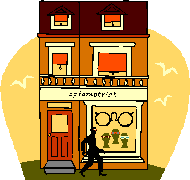 Just how important is it for your store to be found on the Internet? Surveys conducted in 2007 reveal that growing numbers of shoppers—one source claims as many as 93%—are heading to their computers before the Yellow Pages or the newspaper when searching for store phone numbers and information. Last year, retailers with Web sites credited online referrals with 12% of their leads. Other industry observers note that while 92% of consumers research products online, 95% of purchases happen in store.
Just how important is it for your store to be found on the Internet? Surveys conducted in 2007 reveal that growing numbers of shoppers—one source claims as many as 93%—are heading to their computers before the Yellow Pages or the newspaper when searching for store phone numbers and information. Last year, retailers with Web sites credited online referrals with 12% of their leads. Other industry observers note that while 92% of consumers research products online, 95% of purchases happen in store.The message is clear: no matter what size store you have or how long you’ve been successfully in business, you’re missing out on sales if would-be customers can’t find you on the Internet.
For this reason, every store should have a Web site of its own. But if cost or time prohibits you from having your own Internet address, you can still use the following strategies to make your store details appear online. If you do have your own Web site, these tips will help boost your search engine rankings and make your site more visible to a wider audience.
1. Post your business information in free directories.
The five big ones are: Yahoo! Local; YellowPages.com; Local.com; Google Maps; and Superpages.com.
WebListings, offered by Intuit (makers of QuickBooks), is a service that lets you manage your listings with four of the above five directories (excludes Local.com). Use WebListings to easily upload your store information to all of the free directories. It also consolidates the directories’ paid listings, so that if you choose, you may add enhancements such as maps to your store, special coupon offers and lists of brands you carry.
2. Advertise your business online in paid directories.
To ensure that your store details show up on the first page of the most popular search engines, consider low-cost paid inclusion in select directories. Citysearch.com, for instance, has pay-per-click programs available that allow you to only pay a small finder’s fee (usually less than a dollar) for each lead you receive from their site. Store owners without a Web site can set up their store phone number as the referral method.
3. Get more from your advertising dollar.
Most of the venues where you pay to advertise your store have corresponding Web sites. For example, every local newspaper has its own Web site. If you place ads with newspapers and magazines, make sure that they include your store information online, as well.
4. Put an ad on Craigslist.
Craigslist has the 7th highest ranking of page views in the world, with more than 9 billion page views per month. Many small business owners use Craigslist to generate the majority of their local leads.
To place your ad on Craigslist, go to http://www.craigslist.org/ and select your city or the one closest to you. Under the “Services” section, click “Small Biz Ads.” In the very top right corner, click “Post.” Again, select “Small Biz Ads” and choose the area that best reflects your market. The next page that opens provides you with a form. Simply type the information for your ad, click “Continue” and follow the remaining instructions. Ads only show for seven days, so for best results, offer readers incentives or make timely announcements.
5. Put gift certificates to your store on eBay.
eBay contains a category for “Gift Certificates.” In it, small businesses sell gift cards or gift certificates to their stores. Sure, no one’s going to buy a gift certificate for its full value, so you will lose money. But you will also be able to showcase your store’s offerings to hundreds of shoppers and the winning bidders just may become loyal local customers.
One caveat about joining the stream of the World Wide Web—don’t expect these promotion methods to open the floodgates and bring a deluge of visitors to your store. Internet marketing itself is a serious and challenging task. That said, these techniques will bring you more traffic—to your Web site, if you have one, and to your store.








No comments:
Post a Comment